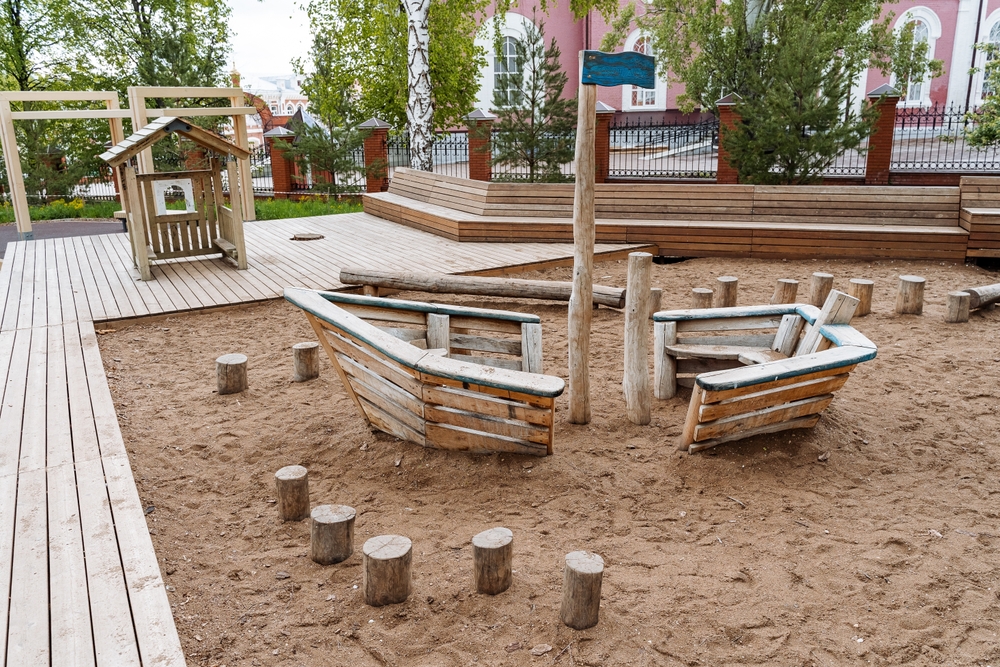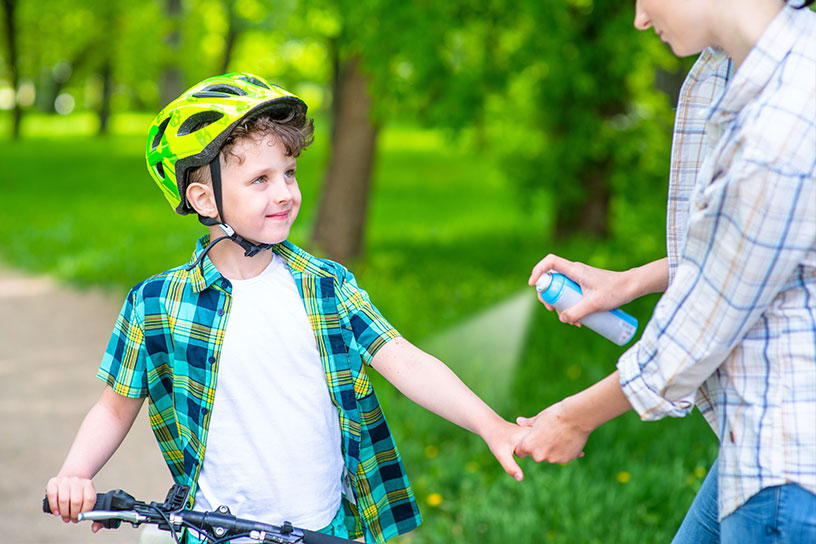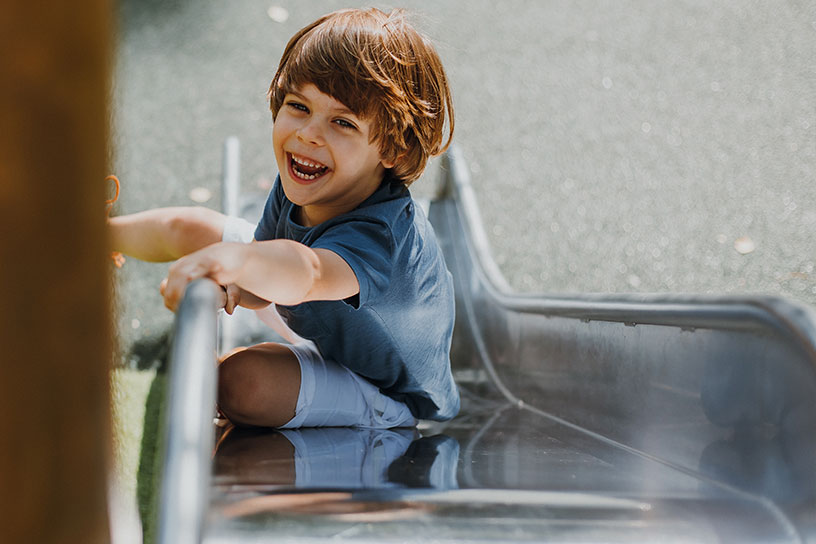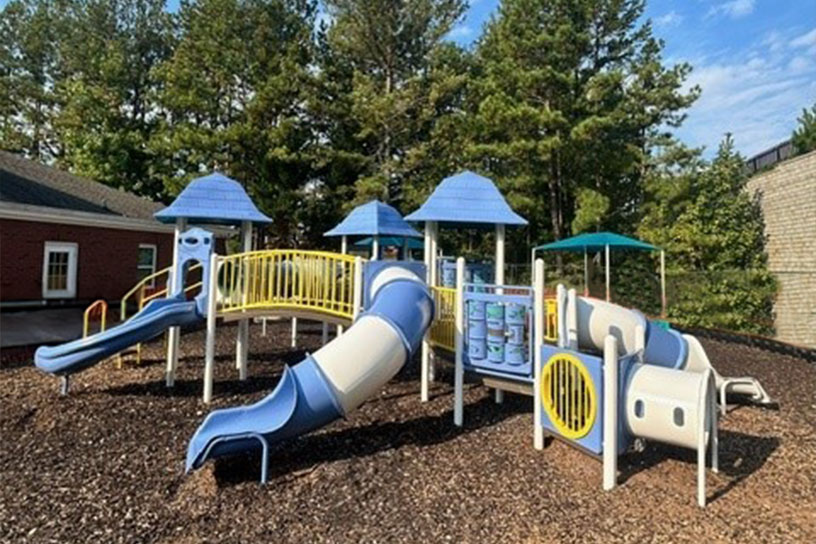Montessori playgrounds offer children a unique and stimulating environment for play and exploration. With a focus on natural materials and developmentally appropriate activities, these playgrounds are becoming increasingly popular in schools and outdoor learning centers. Today we're covering everything you need to know about Montessori playgrounds, including what they are, how they differ from traditional playgrounds, common features, and safety considerations.
What Is a Montessori Playground?
Montessori playgrounds are designed to follow the Montessori method, which fosters learning through self-motivation and natural interests rather than rigid, formal education.
Montessori playgrounds focus on providing children with an environment that encourages creative and exploratory play. They have open designs, fewer guardrails, and more opportunities for children to take risks and explore. They may also focus on using natural materials like wood, stones, and rope.
How Do Montessori and Traditional Playgrounds Differ?
Montessori playgrounds differ from traditional playgrounds in a few key ways. The most important difference is that a Montessori playground encourages exploration, experimentation, and self-directed play, while traditional playgrounds are more often designed with certain age groups or play activities in mind.
Other differences between Montessori and traditional playgrounds include the types of equipment used, the way they are organized, their approaches to playground safety, and the availability of play materials.
What Are Common Features on a Montessori Playground?
Unlike traditional playgrounds, Montessori playgrounds tend to be more flat and spread out. Instead of being one large structure, they often consist of ten or more small structures, like shelters, slides, climbing structures, stepping stones, and other interactive components. The goal of these features is to help children develop physically and mentally through exploration and curiosity. There is no wrong way to play on a Montessori playground.
Safety Considerations for Montessori Playground Equipment
In terms of playground safety, Montessori playgrounds have different safety requirements than traditional playgrounds. Because of the open-ended nature of Montessori playgrounds, there are more opportunities for children to use their own judgment about the risks involved in play. This is one of the reasons that Montessori playgrounds may be considered controversial for public use.
However, there are a number of ways to improve the overall safety of a Montessori playground while allowing children to play freely.
Appropriate Attire
Just like on a traditional playground, clothing should be fitted but non-restrictive to allow for easy movement and plenty of freedom. Clothing that is too loose can get caught on the equipment and cause serious injuries.
Shoes should be closed-toed, with good grip and support, as slips and falls are common among children at play. Items like scarves, hats, jewelry, bicycle helmets, and clothing with drawstrings should be removed before playtime. These items can become tangled in playground equipment, creating a dangerous situation.
Close Supervision
It is essential for parents or teachers to supervise children closely when they are using Montessori playground equipment. This is due to the fact that these playgrounds provide challenges and opportunities for risk-taking that may lead to an increase in injuries without active supervision. Supervision also allows adults to offer helpful hints and guidance, teaching children how to interact safely with their peers and other objects on the playground.
Also, if an unsafe situation arises, an adult can intervene quickly to prevent injuries and accidents. It is important that adults remain aware and vigilant of their surroundings while children are playing in the playground.

Playground Rules
At a Montessori playground, playground rules are key, since the focus of the playground is on learning and exploration. Just like children are taught how to correctly use a sliding board (sitting upright, feet first), they will need some guidance on how to explore a Montessori play space safely.
While Montessori play rules tend to be less rigid than traditional playground rules, there should still be a focus on personal safety, the safety of others, and taking turns.
Frequent Inspections
Frequent playground inspections are essential when it comes to Montessori playground safety. Inspections should be conducted regularly by a certified playground safety inspector (CPSI) and should include an assessment of the playground structure and equipment, as well as the surrounding surfacing.
Many Montessori playgrounds are custom-built or even homemade. While we always recommend working with a commercial playground manufacturer, if you do have a homemade or DIY playground structure, inspections are even more important.
How Playground Guardian Can Help
Our team of certified playground safety professionals can help make Montessori play safer! In addition to formal playground inspection, we offer surface impact testing, playground maintenance, sanitization, and more.
Whether you manage a traditional or Montessori playground, Playground Guardian can help you ensure the safety of your space for children at play. Schedule a demo of Park Protector, our DIY playground inspection software, to see how it makes inspections easy and cost-effective.





